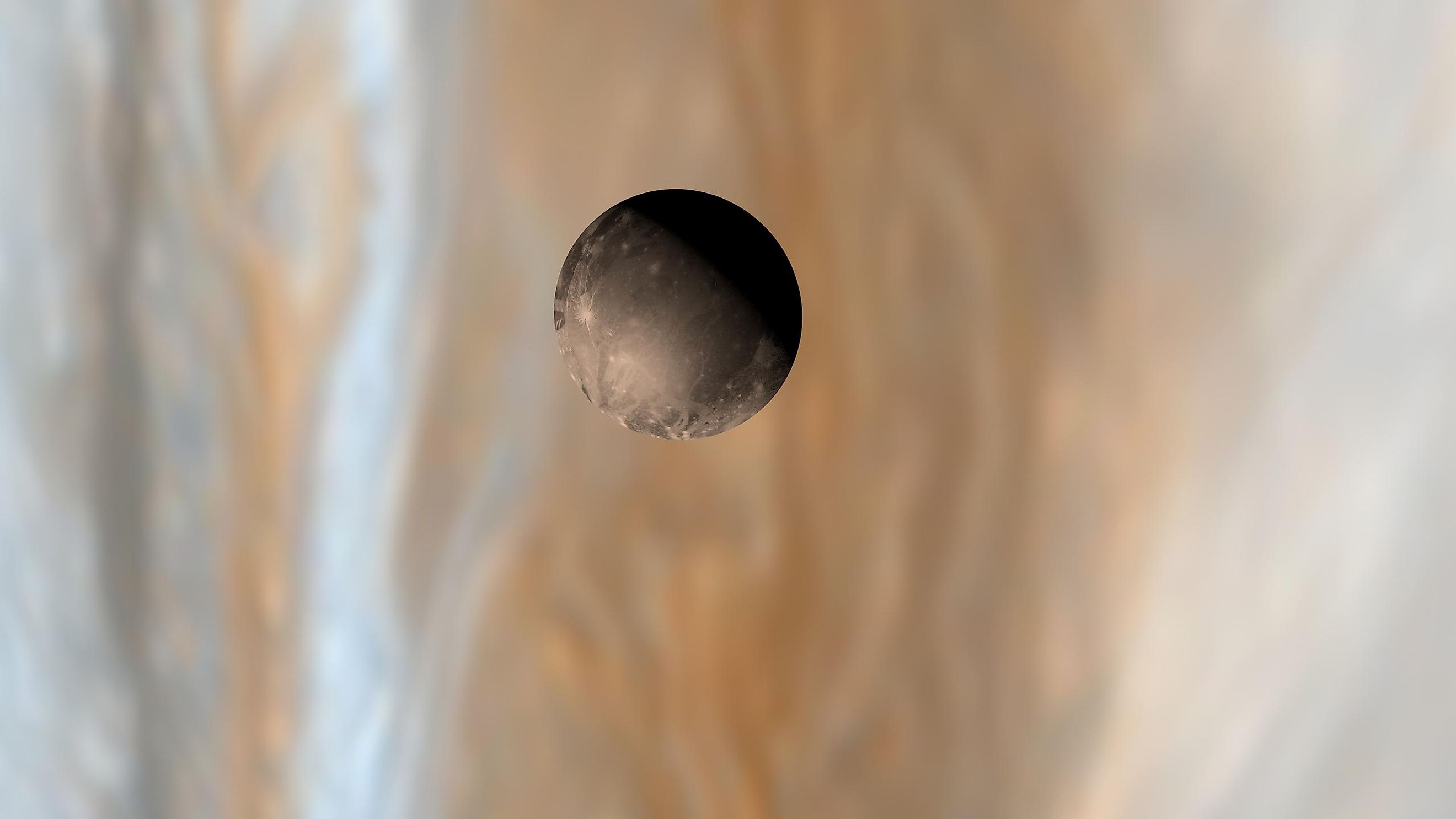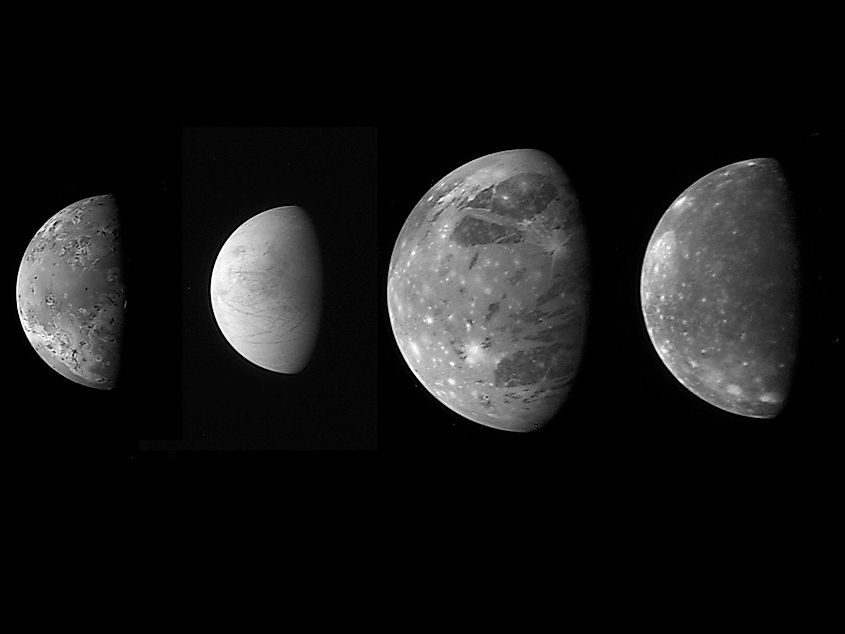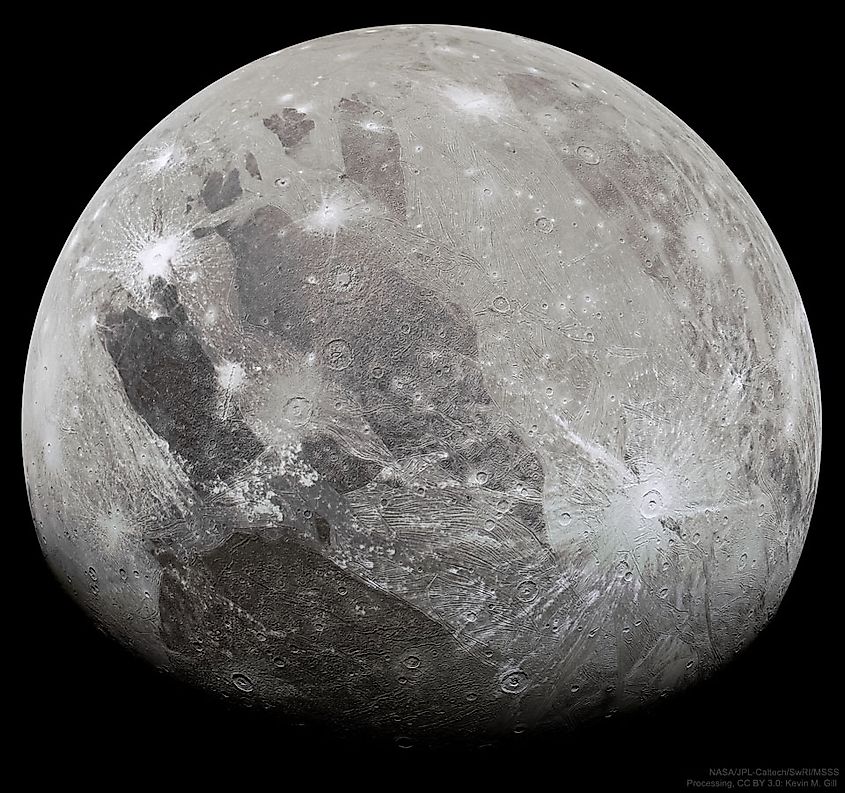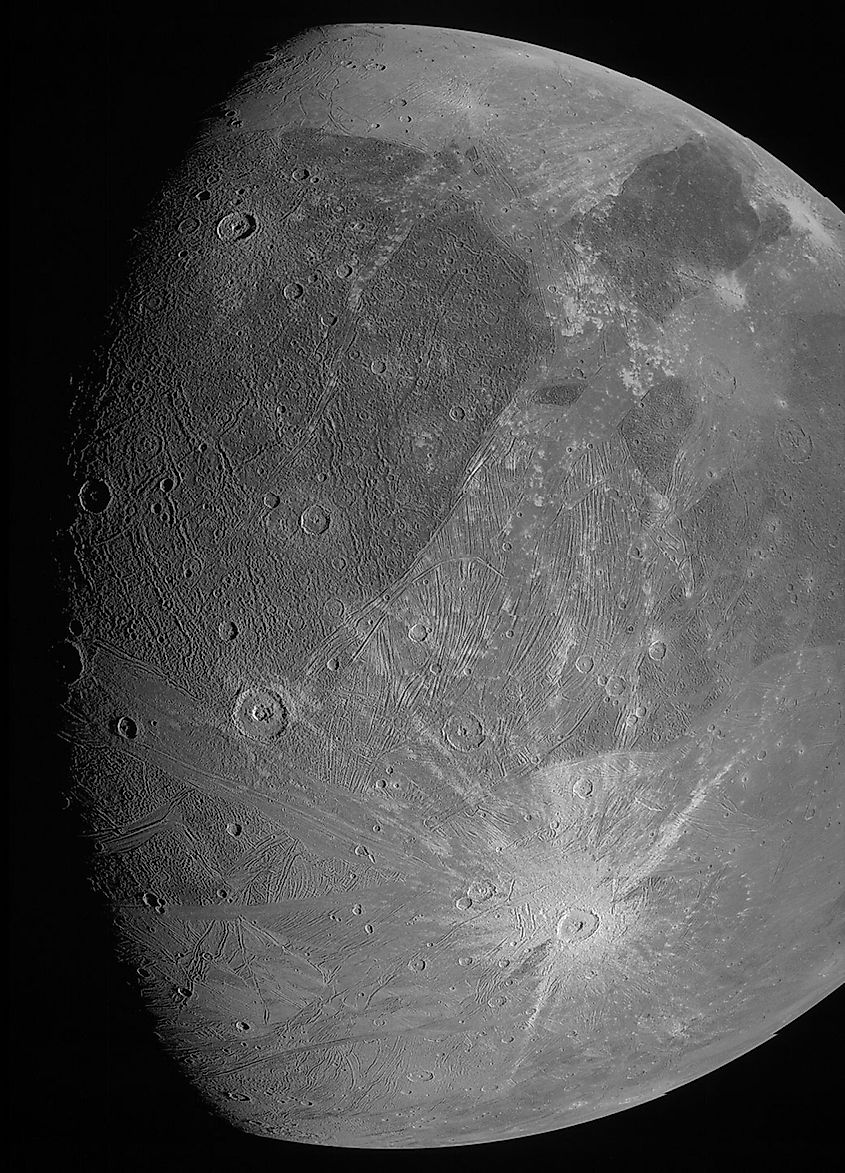
What Is The Largest Moon In The Solar System?
Our solar system is home to over 200 individual moons. The majority of these moons orbit both Jupiter and Saturn. Both Jupiter and Saturn are orbited by over 70 confirmed moons. Some of the most unique, interesting moons orbit these two gas giants, and that includes the largest moon in the solar system. The biggest moon in the solar system is Jupiter’s moon Ganymede with a diameter of 3,273-miles (5,268-kilometres), making it larger than the planet Mercury and the ninth largest object in the solar system.
Discovery of Ganymede

Ganymede was first discovered by Galileo Galilei in 1610. Galileo became the first person in history to point a telescope towards the planets and detail his observations. Galileo’s observations of Jupiter proved to be one of his most significant discoveries. While observing Jupiter, Galileo noticed that it was accompanied by four bright dots, which he originally assumed were background stars. However, further observations revealed that these dots were moving around Jupiter, and Galileo correctly deduced that these objects were moons rather than stars. Galileo had discovered four entirely new worlds, and his discovery also offered observational proof that, contrary to what was believed at the time, not everything orbited the Earth. While Galileo’s discoveries are seen as significant today, they were not well received at the time. The prevailing wisdom was that everything orbited the Earth, and that included the sun, planets, and stars. It was also believed that the Earth was at the center of the universe. Galileo’s observations strongly contradicted all of these beliefs, and so Galileo was unfortunately put on trial and forced to recant his discoveries. He remained under house arrest for the remainder of his life.
Size and Orbit of Ganymede

If Galileo were alive today, he would probably be astonished at the amount of information that has been discovered about the moons he discovered over 400 years ago. The four moons he discovered were later named the four Galilean moons of Jupiter. Moving in order from innermost to outermost, they are Io, Europa, Ganymede, and Callisto. Ganymede is the larger of the four and the biggest, most massive moon in the solar system. Having a diameter of 3,273-miles (5,268-kilometres), it is larger than Mercury, which has a diameter of 3,032-miles (4,879-kilometres). In fact, Ganymede is so big that if it orbited the sun rather than Jupiter, it would be defined as a planet rather than a moon.
Ganymede orbits Jupiter at a distance of 665,100-miles (1.07-million kilometres). At this distance, it takes Ganymede just over seven days to complete one orbit around Jupiter. Like most moons in our solar system, Ganymede has no rotation. Rather, Ganymede is tidally locked to Jupiter, meaning that one side always faces the gas giant while the other side constantly faces away
Surface and Composition

At first glance, Ganymede looks very similar to both our moon and Mercury. The surface is mostly grey and the dominating surface features are impact craters. However, while Ganymede may look similar to the moon and Mercury, its surface contains a much higher amount of ice than the other two. This results in Ganymede having a much higher albedo than the moon and Mercury, meaning it reflects more sunlight into space. Interestingly, the surface of Ganymede is divided into two separate regions: darker regions that are heavily cratered, and lighter regions that appear to be geologically younger. Why Ganymede’s surface is differentiated into these regions remains somewhat of a mystery since the presence of younger terrain suggests that Ganymede has experienced some form of geologic activity in the past. The younger surface is home to vast ridges that suggest Ganymede may have experienced some form of tectonic activity in the past, yet exactly what would have caused it remains a mystery.
Another factor that differentiates Ganymede from our moon and Mercury is that evidence suggests Ganymede contains a subsurface ocean of liquid water, and it may even be the largest ocean in the solar system. As with Ganymede’s surface geology, the exact reasons behind the presence of an ocean remains a mystery. Amazingly, the presence of an ocean was discovered through another unique feature of Ganymede: its magnetic field. As of yet, Ganymede is the only known moon to produce its own magnetic field, and analysis of that magnetic field suggests that Ganymede has a subsurface ocean of liquid water. Furthermore, the presence of a magnetic field also means that Ganymede experiences the aurora (northern lights), another unique feature of this large moon.











